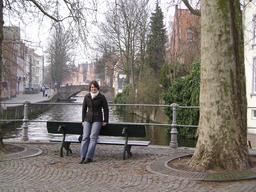|
Home
Research
Teaching
Publications
Links
Contact
|
Research Interests
-
Genetic networks and sequence motifs
Transcription of each gene is controlled by a regulatory region upstream from the site where transcription begins. There are two elements to this control region: (1) short specific sequences of DNA and (2) transcription factors or gene regulatory elements that recognize and bind to them. The aim is to find the regulatory cis-acting elements or transcription factor binding sites (TFBS) for transcription factors known to be involved in neuronal outgrowth. This information will then be used, along with microarray data, to build a model of the genetic network for the successful regeneration of neurons in the rat.
-
Design and analysis of microarray experiments
Microarray technology allows the expression levels of thousands of genes to be measured simultaneously. At the same time as the use of microarrays has become more widespread, the complexity of the questions posed by the biologist has also increased. Given the costs involved with a large microarray experiment, as well as other constraints such as limited RNA availability, the issue of good experimental design has become increasingly important. In Amsterdam, I collaborate with biologists at the VU and NIH on the design and analysis of microarray experiments with the aim of identifying differentially expressed genes across various conditions and/or time points.
-
Crossover interference in linkage analysis
During meiosis, chromosomes replicate, pair and then synapse. Once pairing is complete, crossing over, the reciprocal exchange of chromosomal segments among non-sister chromatids begins. Crossover interference is the non random placement of the crossover points along the length of the chromosome. While many models for this process have been proposed, the majority of genetic mapping studies still ignore the phenomenon of interference and assume the crossover locations come from a Poisson process (leading to Haldane's map function). We have implemented the chi2 model for interference in both simulation studies for breeding programs and in an extension of the Lander-Green algorithm for genetic mapping. Future work will examine the impact of using this more comprehensive model on QTL analysis in experimental crosses.
last updated August 16, 2005
|

